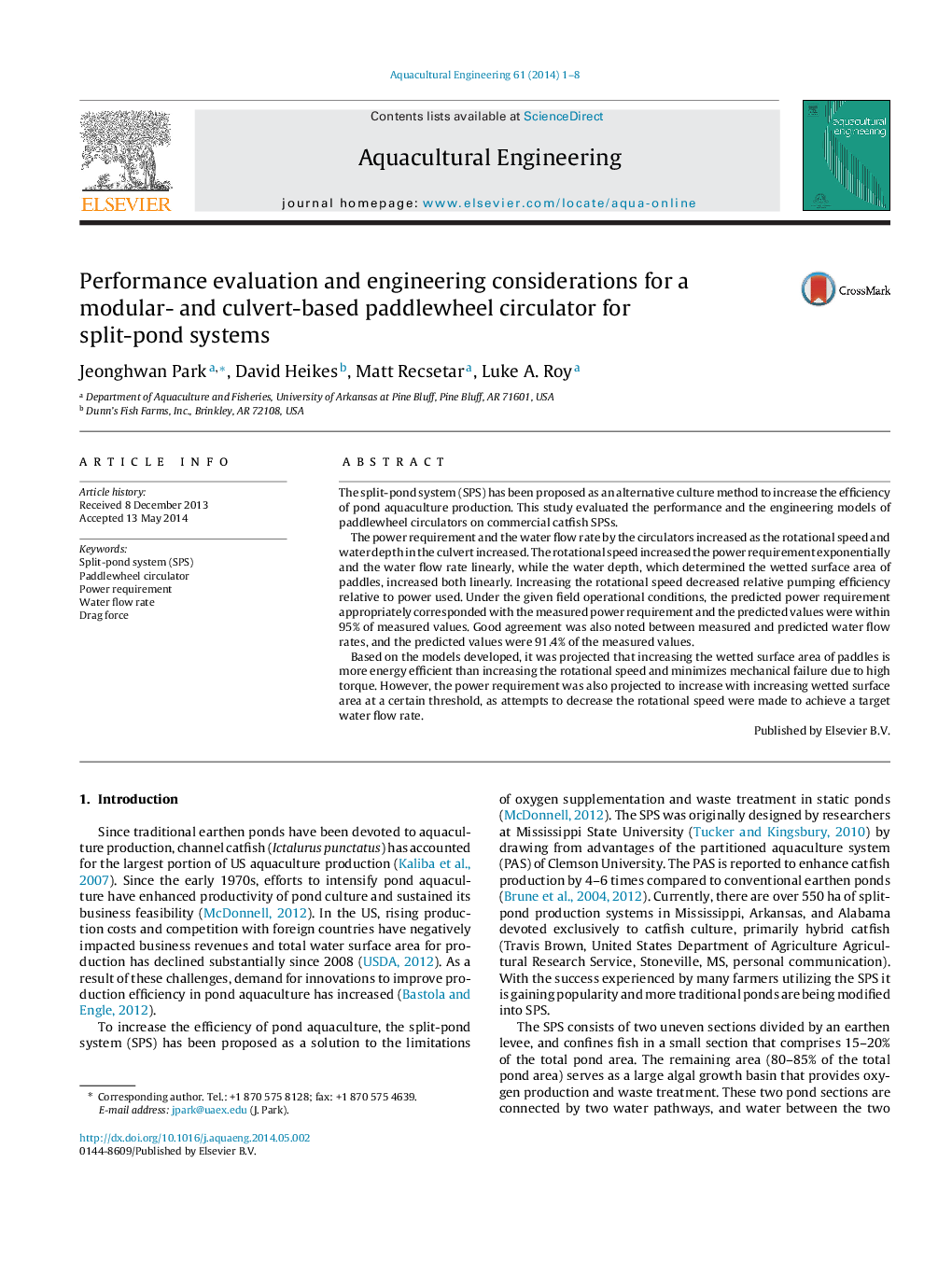| Article ID | Journal | Published Year | Pages | File Type |
|---|---|---|---|---|
| 6381276 | Aquacultural Engineering | 2014 | 8 Pages |
â¢The prediction powers of the engineering models were 95% for the power requirement and 91.4% for the water flow rates.â¢Increasing wetted surface area of paddles is more energy efficient than increasing rotation speed in order to achieve proper water flow rate.â¢The power requirement was projected to increase with increasing wetted surface area at a certain threshold, as attempts to decrease the rotational speed were made to achieve a target water flow rate.
The split-pond system (SPS) has been proposed as an alternative culture method to increase the efficiency of pond aquaculture production. This study evaluated the performance and the engineering models of paddlewheel circulators on commercial catfish SPSs.The power requirement and the water flow rate by the circulators increased as the rotational speed and water depth in the culvert increased. The rotational speed increased the power requirement exponentially and the water flow rate linearly, while the water depth, which determined the wetted surface area of paddles, increased both linearly. Increasing the rotational speed decreased relative pumping efficiency relative to power used. Under the given field operational conditions, the predicted power requirement appropriately corresponded with the measured power requirement and the predicted values were within 95% of measured values. Good agreement was also noted between measured and predicted water flow rates, and the predicted values were 91.4% of the measured values.Based on the models developed, it was projected that increasing the wetted surface area of paddles is more energy efficient than increasing the rotational speed and minimizes mechanical failure due to high torque. However, the power requirement was also projected to increase with increasing wetted surface area at a certain threshold, as attempts to decrease the rotational speed were made to achieve a target water flow rate.
